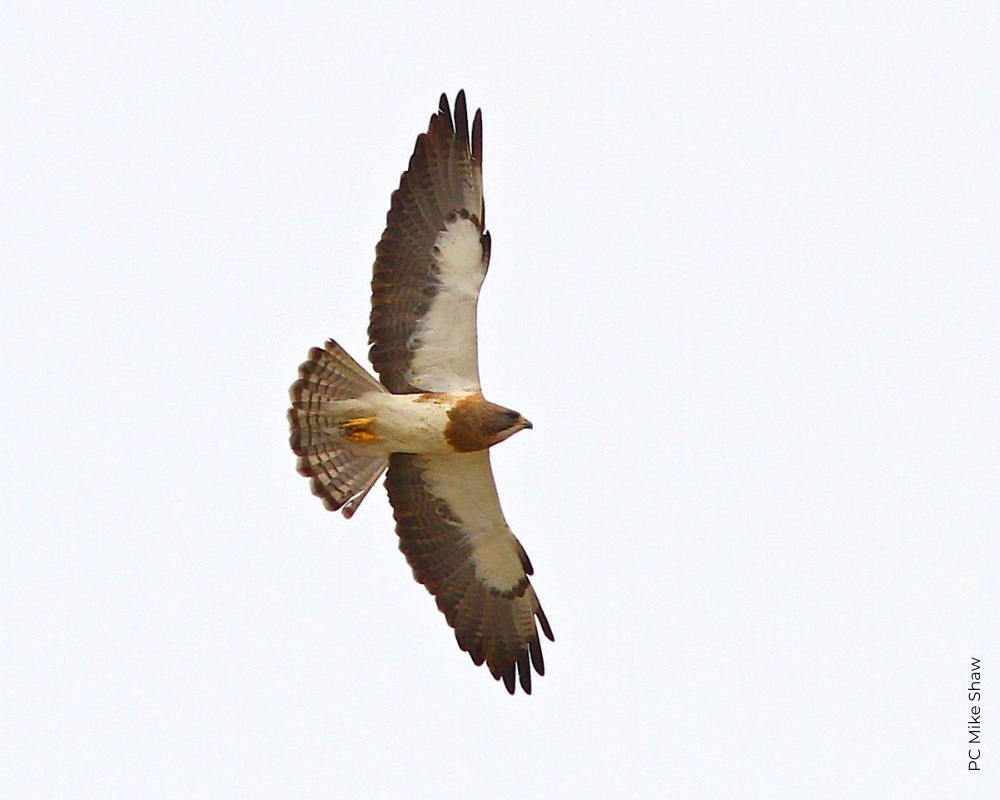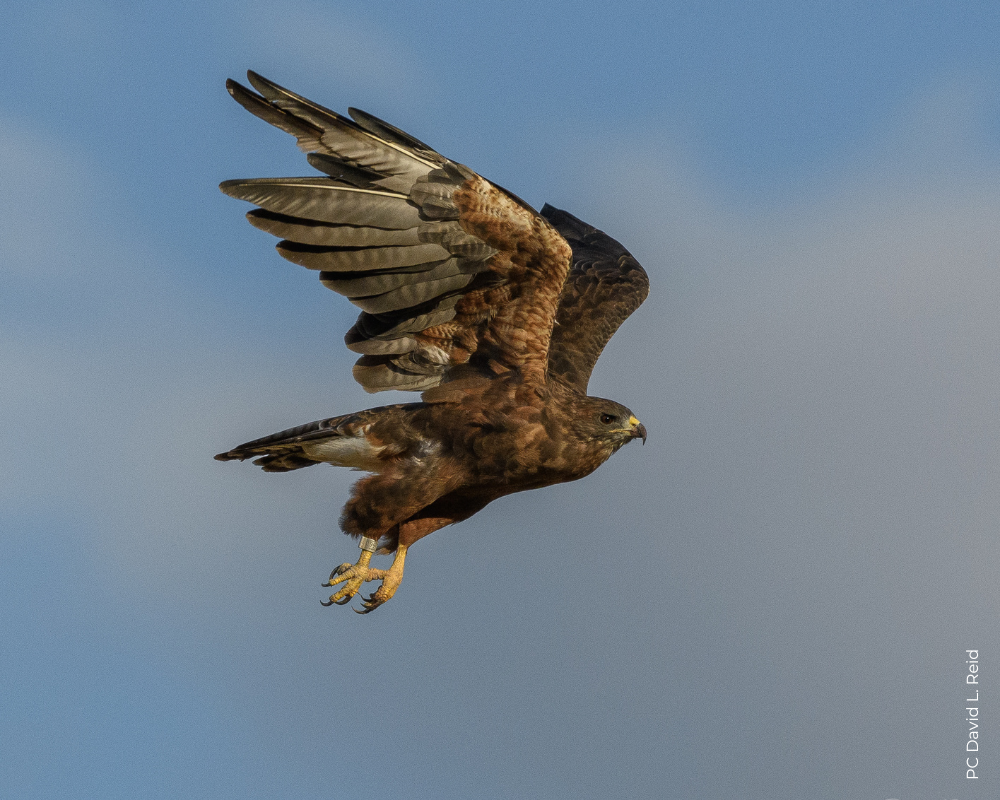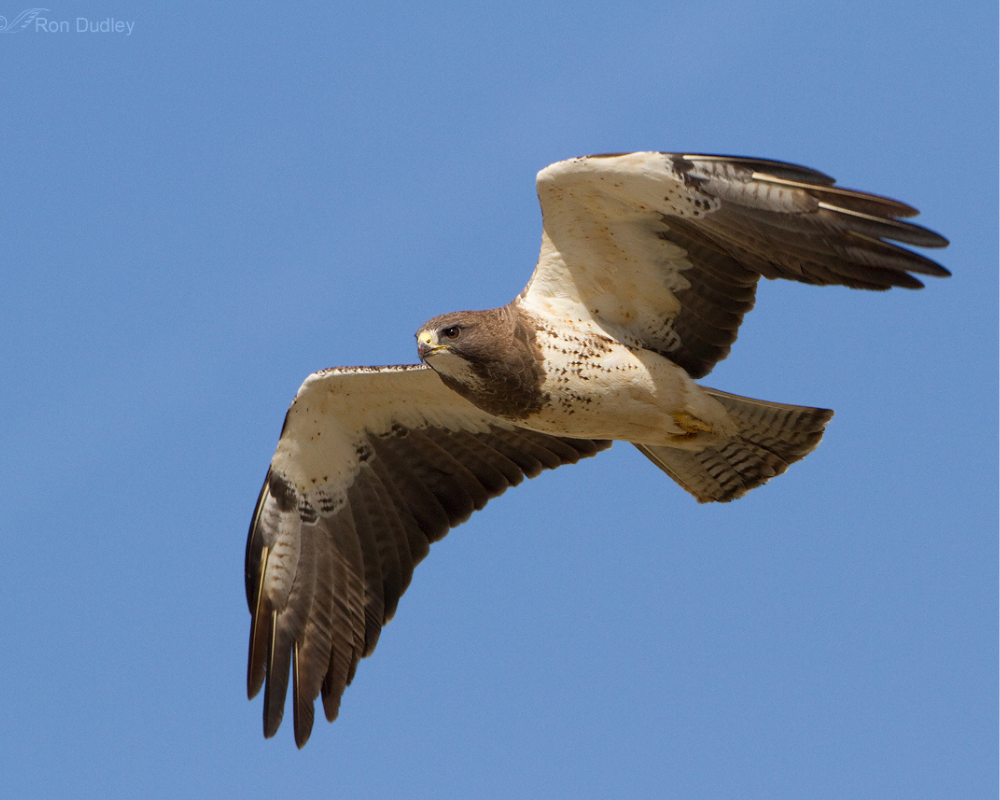Overview
Swainson’s Hawks are birds of the West, nesting in open country habitats, including Pinyon-juniper, Sagebrush grasslands, agricultural areas, and riparian corridors. They nest in large deciduous trees or junipers, depending on availability or on power poles. Swainson’s Hawks are territorial on the breeding grounds but share territories where pair densities are high. They are large birds, only slightly smaller than Red-tailed Hawk, but hunt mainly rodents and insects, and also small birds and snakes. Swainson’s Hawks are fairly common breeders across much of their range from northern Mexico to central Canada and west to California. They are localized in the northern part of their range and rare in Alaska. Swainson’s Hawks become uncommon along the eastern Great Plains, with a few pairs breeding east to Illinois.
Swainson’s Hawks congregate outside the breeding season in places where food resources are plentiful, especially flooded fields (particularly alfalfa) where mice are forced out of their burrows and other agricultural areas. It is not uncommon to see large groups on the ground following tractors that turn up rodents and insects. During migration and winter, they are gregarious, often forming large kettles at various migration sites in Texas, Mexico, and Panama. Swainson’s Hawk’s call is similar to the Red-tailed Hawk but less raspy and higher-pitched. Juvenile gives a high-pitched, repeated, begging “whiw, whiw, whiw, whiw.”




